The First-Generation Audemars Piguet Royal Oak Offshore
With all eyes on the Royal Oak, the significance of the larger-than-life Offshore should not be overlooked.

The Royal Oak Offshore may not be on everybody’s wishlist this Christmas, but quite a few gentlemen would be okay with getting a first edition of “The Beast” to crown their collections. The hype might revolve around the Royal Oak designed by Gerald Genta in 1972, but the Offshore series is no less critical to Audemars Piguet and its current success. The Offshore has a history and meaning; it is legendary and turns 30 next year. As our guest, we had to have it here in the Collector’s Corner.

Background – From RO to ROO
This year Audemars Piguet celebrates 50 years of the Royal Oak, which in 1972 was nothing short of an impressive innovation in design, and more. Some say the watch, designed by Gérald Genta (whose epic portfolio of iconic designs was recently sold at auction and reminded us once again of the true scope of Genta’s talent and influence on the industry), saved Audemars Piguet from the fate of losing ground to the quartz blitzkrieg. The legend says Georges Golay, managing director of AP at that time, called already famous Gérald Genta just before the 1971 Basel Fair and urgently commissioned him to develop a design for an unprecedented steel watch that Italian dealers had requested. And Genta provided one, which they say did not take too long to produce. A year later, the Royal Oak was there to receive shocked reactions and little applause, but we all know the status it enjoys today.
However, the road to stardom was not always paved with rose petals. The Royal Oak Offshore was conceived in 1989 to celebrate the 20th anniversary of the Royal Oak – and to boost sales. The first luxury steel sports watch was not doing great, with sales in steady decline, and just like Golay in 1971, in 1989, Stephen Urquhart, then AP’s Chairman, turned to a creative person for help. Emmanuel Gueit, a young designer about a year into the company, was asked to “create something young men would want to wear“. Gueit delved into the task, feeling no constraints, typical of youth, and coming from a watch designer’s family, no fear.

Emmanuel Gueit recalled in many interviews that the project was frequently put on hold because the company’s management had doubts about how appropriate it would be to release a watch made to Gueit’s design. It was too large, too heavy, and thus impossible to sell. And Gérald Genta disapproved of the Offshore concept – he hated it and expressed it publicly. All these doubts delayed the launch of the new Offshore collection, planned for 1992, for a year. In 1993, the Royal Oak Offshore Chronograph Ref. 25721ST.OO.1000ST.01 premiered. Stephen Urquhart suggested its name to connect with the world of powerboat racing and exclusive yachts. Urquhart also nicknamed the Offshore “The Beast” for its massive case, a perfect alias.
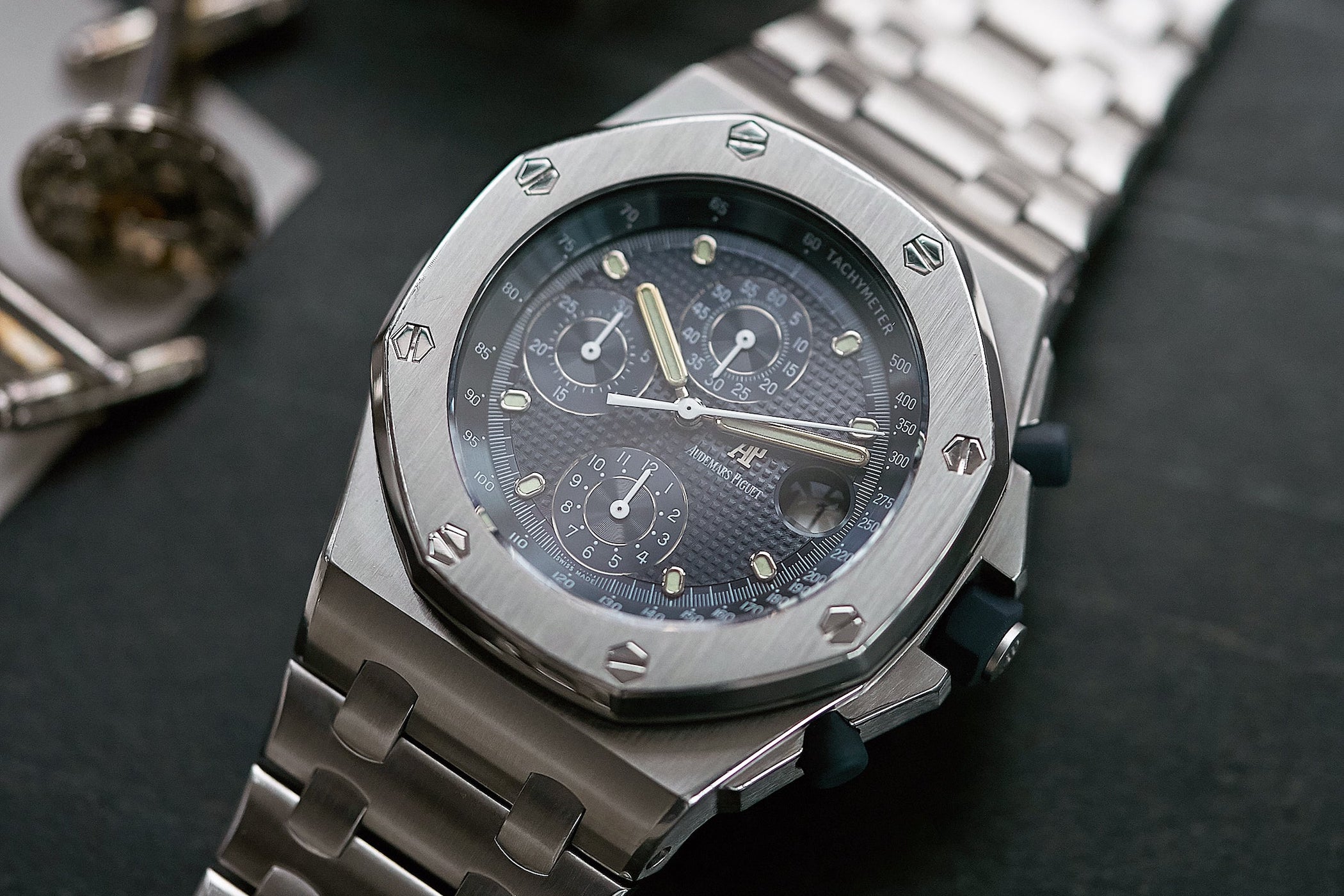
The ROO 25721ST – The Basics
The inaugural Audemars Piguet Royal Oak Offshore of 1993, a blown-up version of an elegant Royal Oak destined for the adventurous crowd, had a steel 42mm diameter case with a 15mm thickness and blue Therban (rubber) chronograph pushers and crown. As an anniversary model for the RO, the watch had an octagonal bezel lined with a rubber gasket, eight signature hexagonal screws, a blue petite tapisserie dial and an integrated bracelet. There was a tachymeter scale on the dial’s outer flange, and the chronograph counters were positioned in a 12-6-9 layout, with a date window at 3 o’clock.
The first trial series – watches numbered D23744 to D23843 – had no mention of the new Offshore name on the screw-down caseback; only “Royal Oak” was engraved, so these first 100 “unmarked” pieces produced are a rarity. Other essential details help identify the Offshore as an original from 1993, but we will get to that later. The movement, 2126/2840, is based on a JLC calibre 888 equipped with a Dubois-Depraz module and protected from magnetic fields by an iron cage. To get to the calibre, you had to remove the caseback and then the cover for the protective casing, held in place by the four tiny screws. The Offshore was a well-conceived and well-developed watch, much more than the result of a superficial design.

Apart from the missing “Offshore” on the caseback, the first 100 “Beasts” had a bracelet with a special clasp with a double-folding blade-like construction. This also applied to the following 400 watches produced, but if you want the coveted one from D23744 to D23843, this attribute is of paramount importance. The removable links on the early series of the 25721ST are secured by screws, two screws on each side of the links.
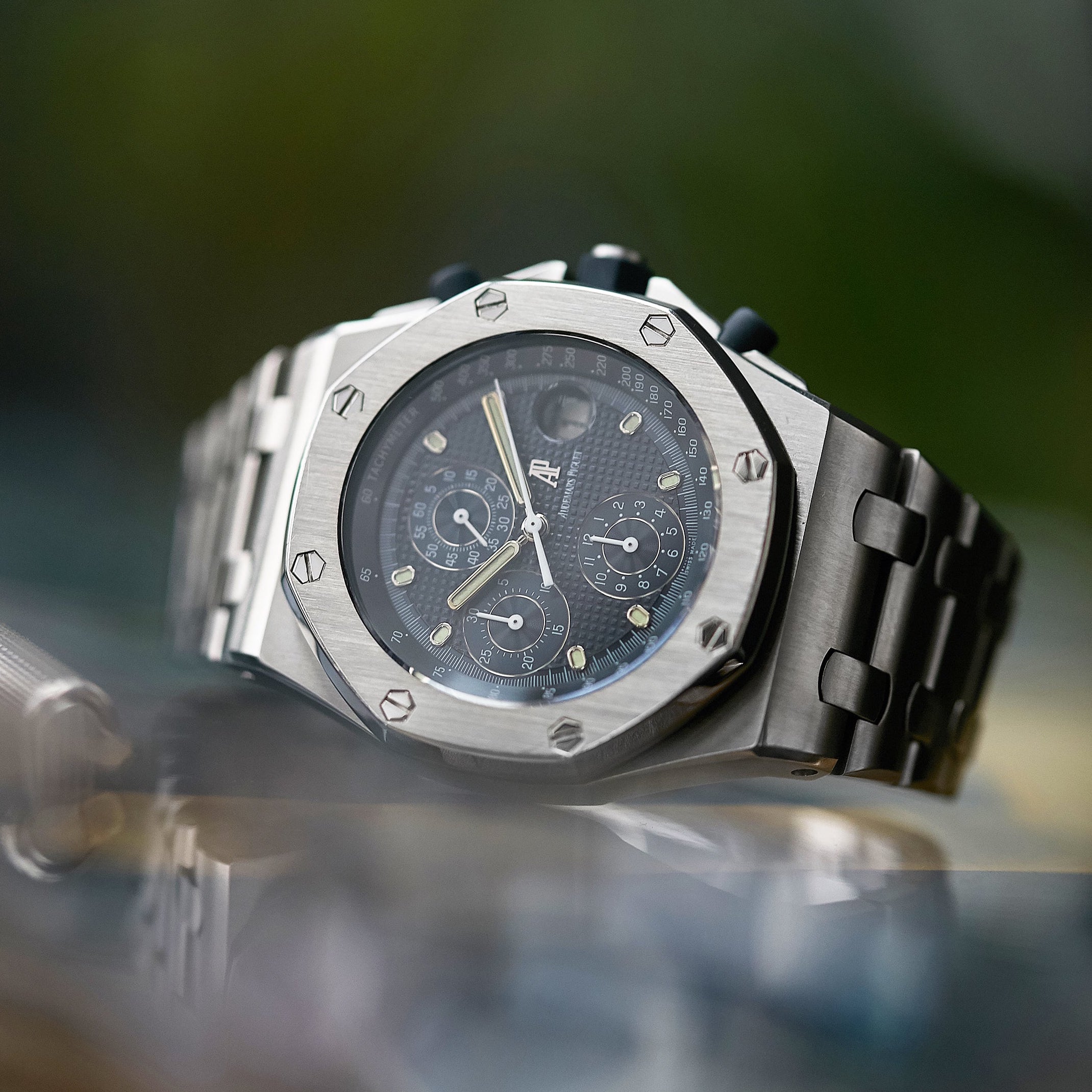
Suppose you are lucky enough to get your hands on an early original Royal Oak Offshore. In that case, you are bound to notice that the blue dial has lost its pretty colour and is beginning to show some brown from the brass plate where unstable paint, typical for the RO and ROO up to 1999, is losing its colour – bringing a tropical effect. There is no need to be disappointed; it is additional proof that you are dealing with the correct specimen.

Speaking of colour, the rubber-clad pushers and the crown are also supposed to be dark blue. We are told that the material Therban, an elastomer with extreme resistance to heat, was often replaced with lower-performing black rubber when AP didn’t service the watches, so this is another detail to look out for. Another fundamental detail is the box in which the watches were sold – octagonal green with blue colour-matching accents and a round window on top to show “The Beast” inside.

The Offshore in 1993, just like the Royal Oak twenty years earlier, did not succeed immediately, initially proving sceptics right and Stephen Urquhart, a supporter of the project, wrong. The Italians immediately warmed to the watch, and it became popular with the young and affluent crowd. Things really started to change when the legendary Italian alpine skier, Alberto Tomba, started wearing the Offshore as an ambassador. Sales picked up, and there was nothing to stop the Royal Oak Offshore from conquering the world now, and it did. Multiple versions of “The Beast” would be produced, including limited editions, and celebrities would help the Offshore reach its cult status.
What to expect from the market
It might be the result of investment-driven interest, or perhaps the collectors’ community grows exponentially, but in 2018, the Audemars Piguet Royal Oak Offshore Ref. 25721ST.OO.1000ST.01 was vindicated. Described as “an early and extremely rare stainless steel chronograph wristwatch with date and tachymeter scale, belonging to Emmanuel Gueit and accompanied by original sketches,” the reference was sold at an auction for CHF 102,500. Prices for “The Beasts” out there, especially the D-series, began to climb a few years earlier, with only very few original pieces under Ref. 25721ST.OO.1000ST.01 currently on offer. Finding an original early model will be challenging and require a serious 5-digit budget.
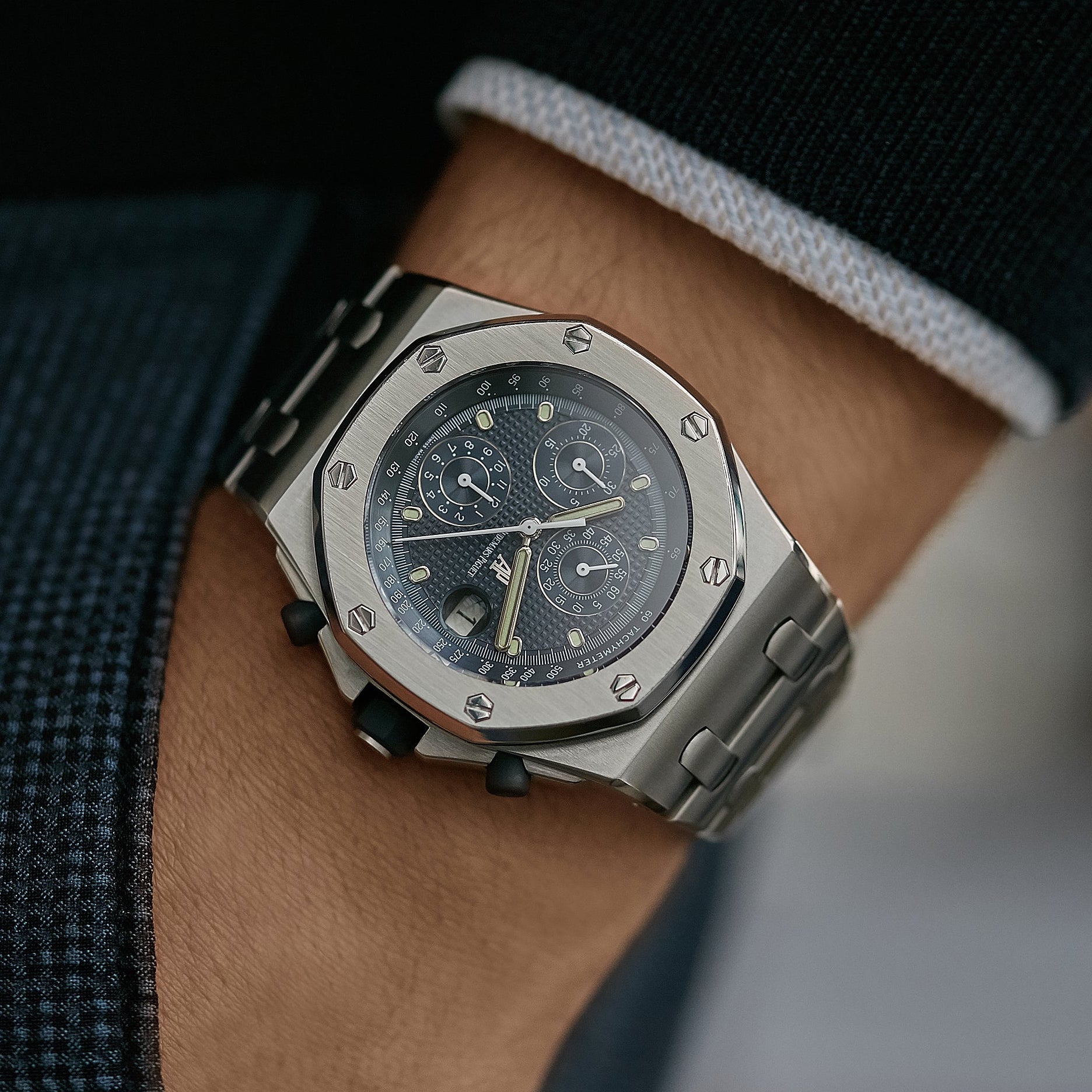
The Audemars Piguet Royal Oak Offshore challenged expectations and was an invitation to experiment with new materials and forms. Like the Royal Oak, the Offshore helped define Audemars Piguet as a brand. Not a mechanical wonder at all; the Offshore is another kind of animal. As such, it is a classic luxury sports watch that was the first of its kind, with an enormous appeal and significance not only for the AP. The early reference 25721ST had a limited run, with less than 3,000 pieces released. To add one to your collection would be a quest and a reward, so keep looking.
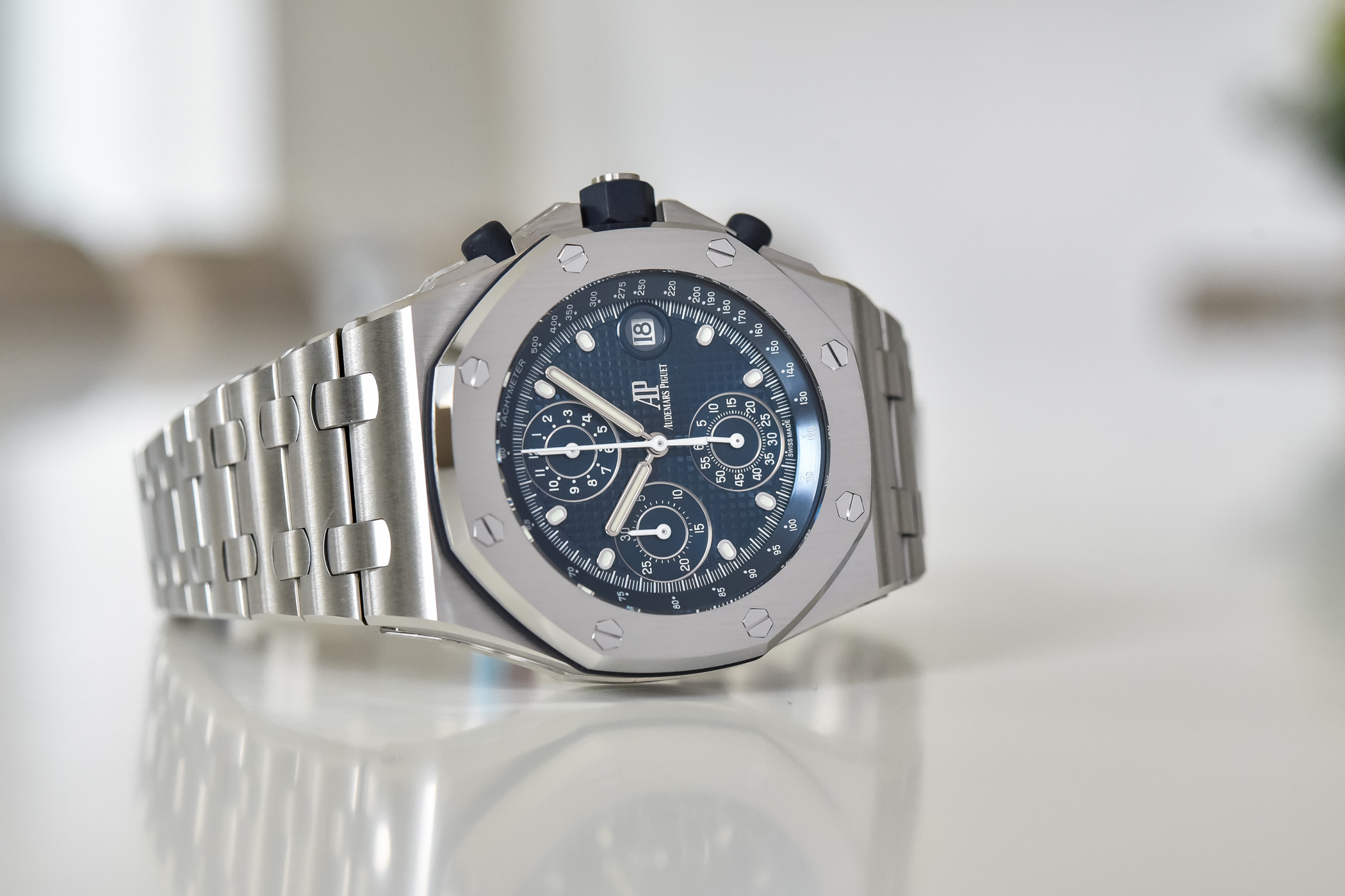
Otherwise, there are two more modern options, the 2018 re-edition reference 26237ST for the 25th anniversary of the model, a watch almost identical visually yet powered by an in-house base movement (calibre 3120) with a Dubois-Depraz module, or the currently available reference 26238ST, again very close in terms of design and finishing, this time with an in-house integrated movement (calibre 4404). Still, none of them can compete with the youngtimer appeal of the original 1993 Beast…

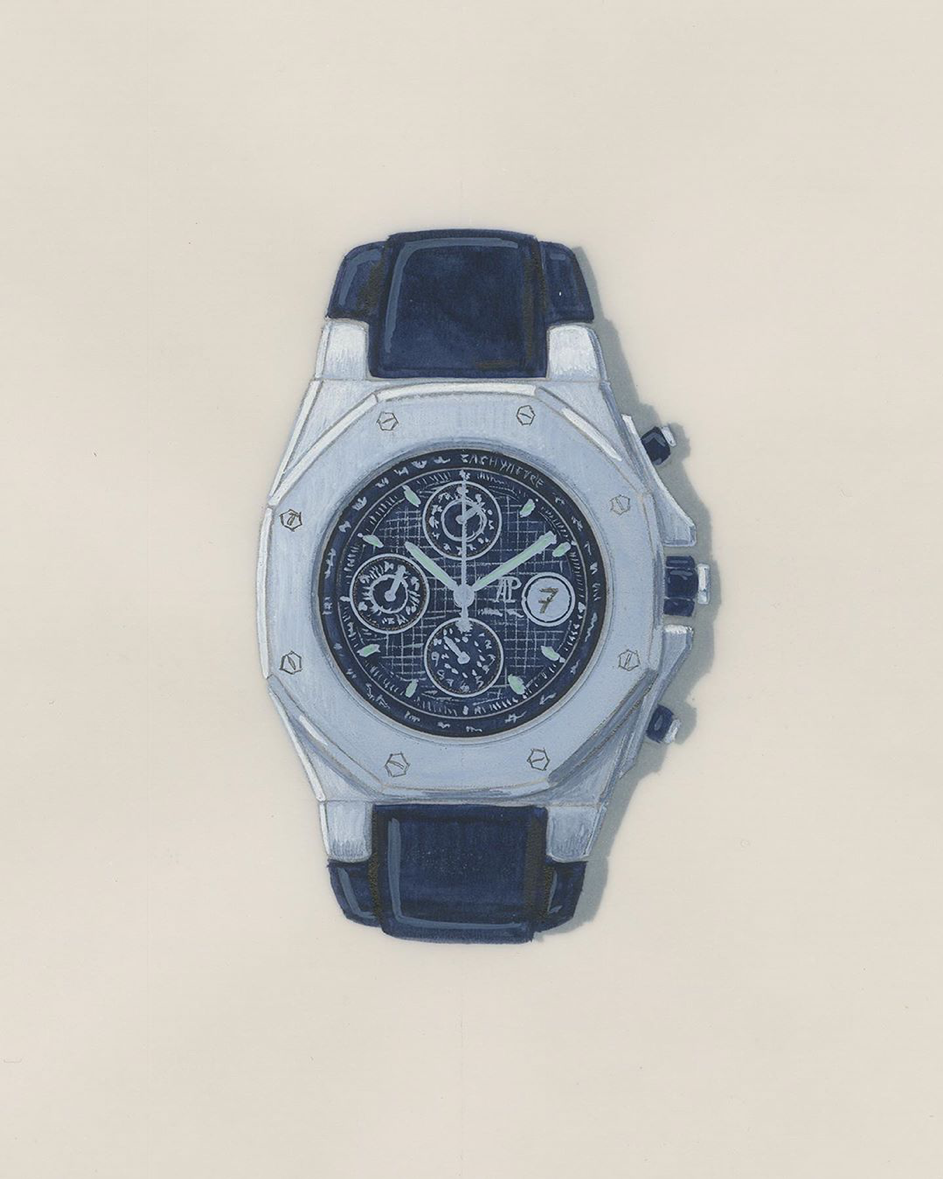

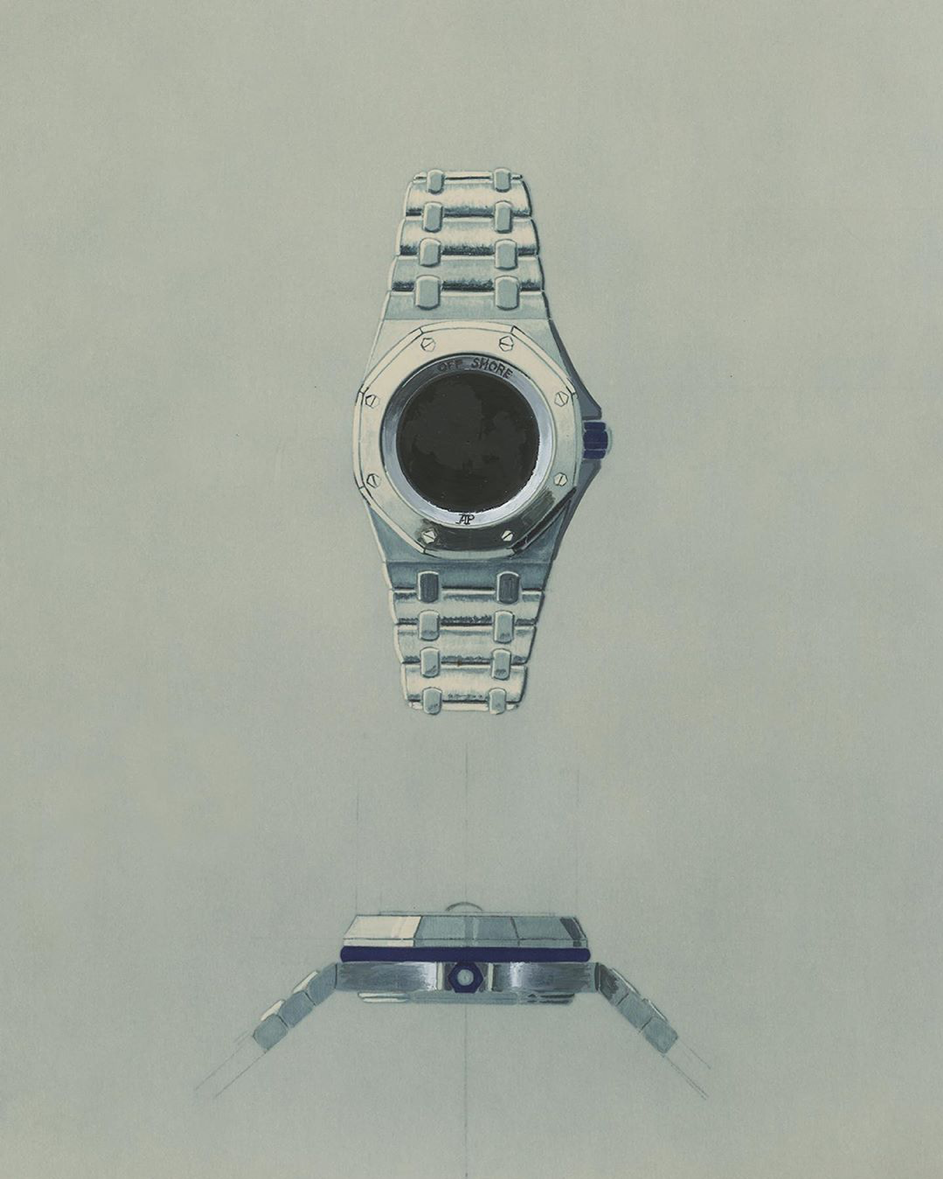
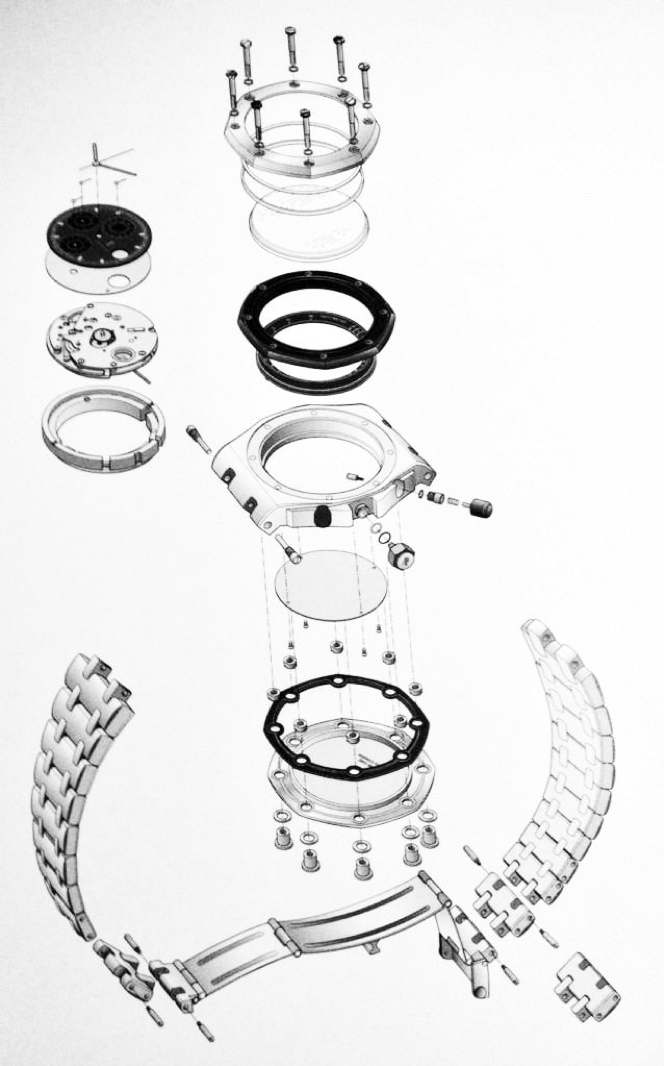
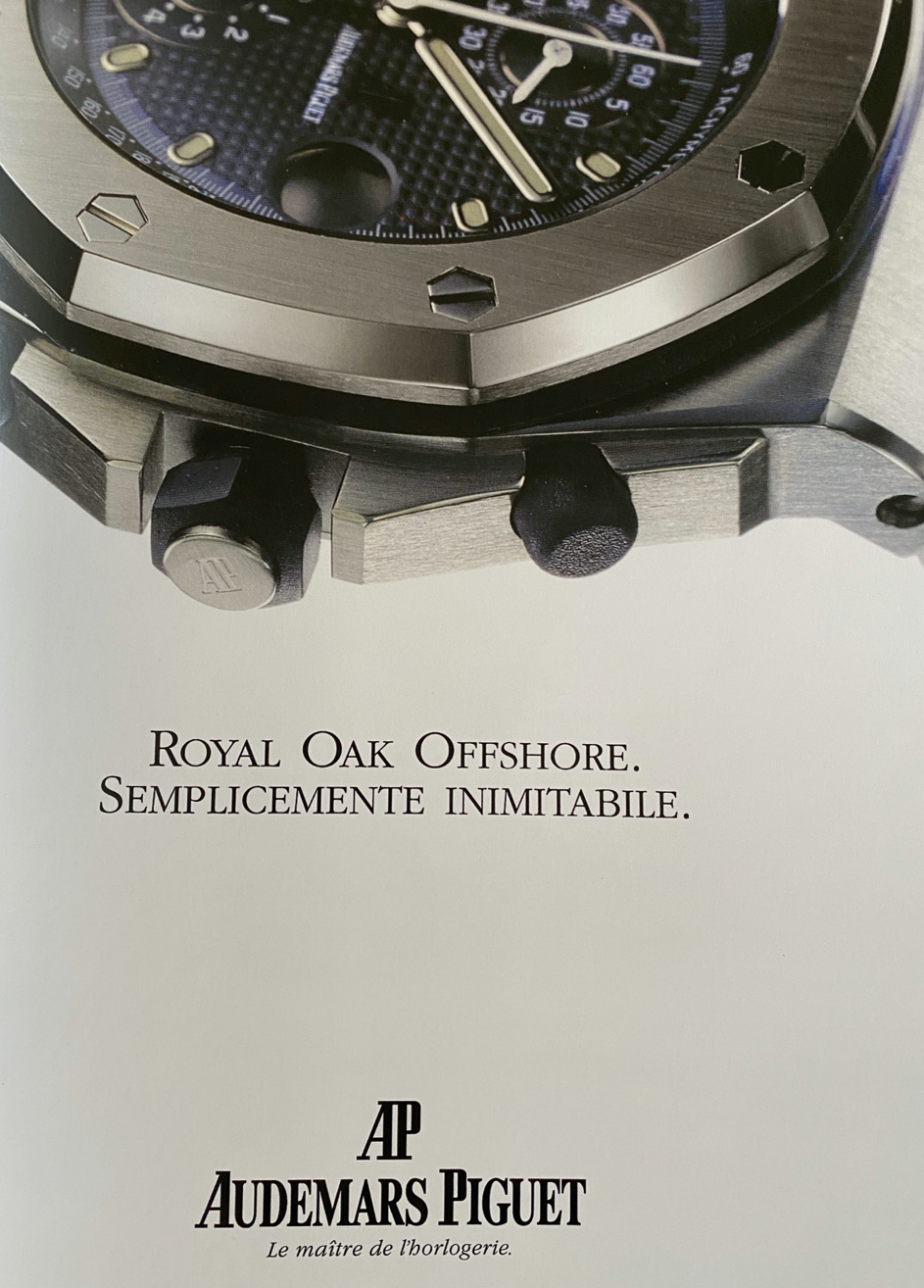
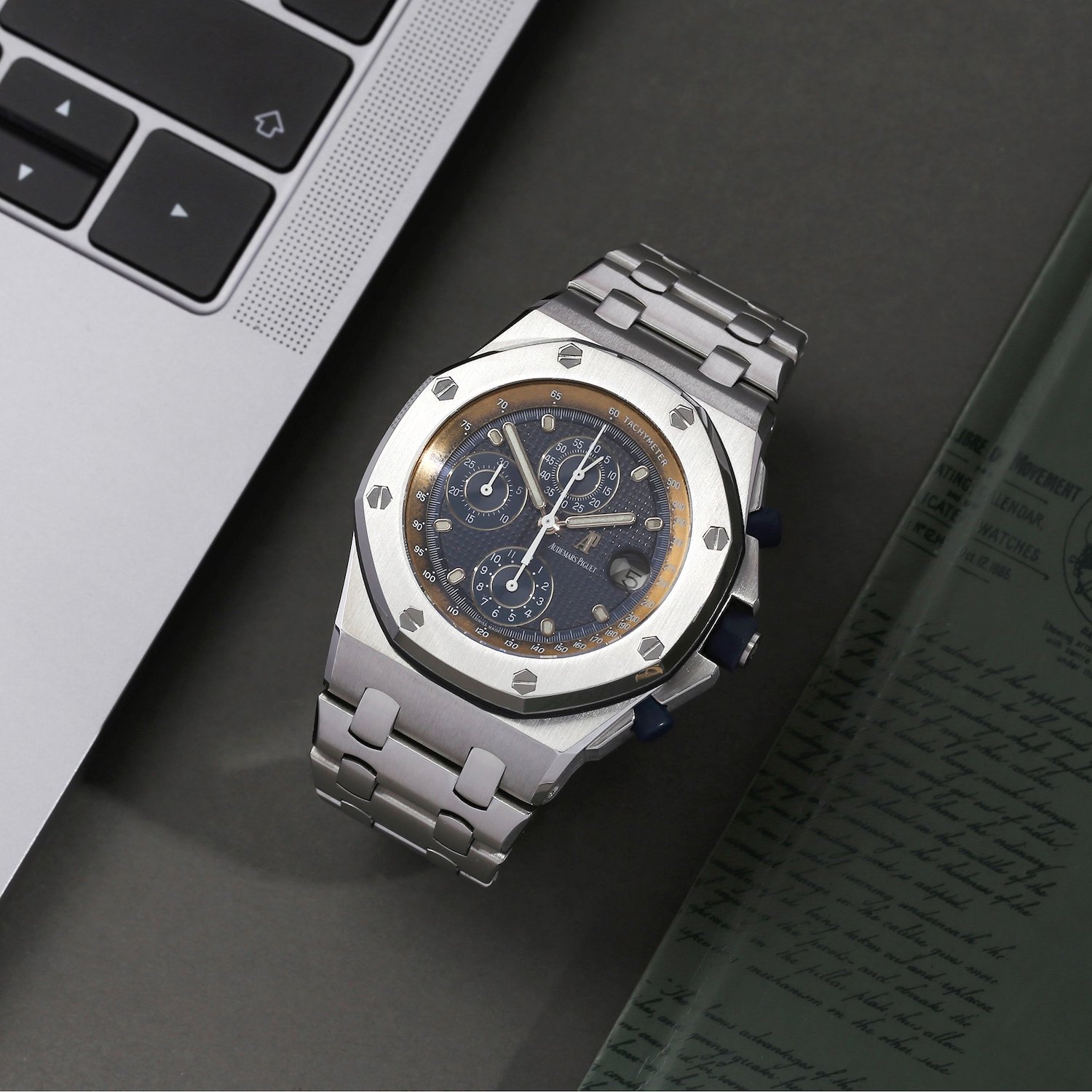




1 response
I Need A Box For Mine Too Keep Safe!!!